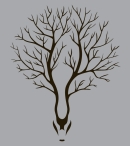Two of the biggest blockbusters of 2017 were Wonder Woman and Star Wars: The Last Jedi – and it seems Patty Jenkins’ and Rian Johnson’s films are a lot more similar than they initially appear. Both tentpoles told stories about being hopeful and optimistic in the face of oppression and unending struggle; using war as a backdrop, they depict the desperation and fearlessness required to maintain one’s sense of good in dark situations, and the camaraderie that comes from fighting alongside like-minded individuals. And, contextually, they’re both films that, in one way or another, went against perceived expectation, one becoming a legitimate cultural milestone for the industry, the other causing a meltdown within its greater fandom . And within these broad similarities are a set of contrasting differences that each make the journeys they contain fascinating to compare and all the more satisfying in their conclusions.
Rey and Diana’s Arcs Are Both About Picking A Side
A core part of Rey and Diana’s arcs is reconciling their place in the history and lineage they come from. Diana is the princess of Themyscira, a mythical island hidden from the rest of the world, and at the beginning of The Last Jedi, Rey has traveled to one of the most remote parts of the galaxy to see Luke Skywalker. Finding out about the ongoing World War I from the stranded Steve Trevor, Diana leaves her island home to kill the God of war, Ares, whom she believes to be responsible for all worldwide conflict. Rey, on the other hand, spends much of her film trying to convince a resentful Luke to rejoin the effort against the dark side and its forces, or at the very least to teach her about the force.
The two grew up entrenched within a nigh-inescapable legacy. For much of her life, Rey lived in and around the wreckage of a Rebel vs. Empire showdown. She’s figuratively a Star Wars fan, dreaming of what those battles might’ve been like to fight in while pondering the stories of Luke and the Jedi and the Sith. To her, the war that gripped the Original Trilogy was something that she could only imagine until The Force Awakens shoves her into a new conflict, one drawing from the same historical principles was the one she’s spent so long hearing about. Diana is literal royalty from a peaceful, self-sufficient fantasy island. She never had any reason to question what was beyond Themyscira until she heard the news of worldwide turmoil and decided she wanted to help, a desire she faces alone ( albeit accompanied with the very human Trevor ) because her island home would rather stay neutral.
An integral part of each character’s journey is how they learn to take a lead for themselves. Rey finds Luke an older man who’s decided staying out of things is better for him and everybody else. She figured he’d be eager to and aid in cutting down the dark side again, instead he’s become an embittered recluse crippled by his own resentment at how he failed Kylo Ren as a mentor. Failing to convince Luke to come with her, she decides to try and forge a connection with Kylo, knowing that he was once good , an encounter that almost gets her killed before she ultimately decides what she really wants is to fight with the Resistance, leaving behind an evermore irate Ren. Meanwhile, having left the Amazons behind, Diana finds the battlefields of man filled with desperate stand-offs. Despite Steve’s protests, she chooses to break through the conflict herself, creating the iconic No Man’s Land scene in her onscreen inauguration as Wonder Woman.
A fundamental building block of these films is developing agency in one’s moral core. Diana and Rey learn that in a climate of war, all decisions are a reflection of a person’s sense of right and wrong. Inaction is allowing someone else take control, and taking action means picking a side and living with itT, a rather large and daunting proposition in both cases. But it’s much more than this pair’s arcs.
Torrent Invites! Buy, Trade, Sell Or Find Free Invites, For EVERY Private Tracker! HDBits.org, BTN, PTP, MTV, Empornium, Orpheus, Bibliotik, RED, IPT, TL, PHD etc!
Results 1 to 1 of 1
-
01-09-2018 #1Extreme User




















- Reputation Points
- 37836
- Reputation Power
- 100
- Join Date
- Jul 2016
- Posts
- 3,266
- Time Online
- 42 d 5 h 50 m
- Avg. Time Online
- 21 m
- Mentioned
- 235 Post(s)
- Quoted
- 33 Post(s)
- Liked
- 2807 times
- Feedbacks
- 4 (100%)
Star Wars 8 And Wonder Woman Are The Same Movie


 2Likes
2Likes LinkBack URL
LinkBack URL About LinkBacks
About LinkBacks




 Reply With Quote
Reply With Quote





